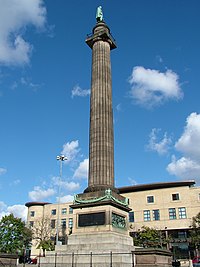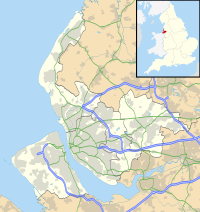Wellington's Column
| Wellington's Column | |
|---|---|

Wellington's Column
|
|
| Location | Liverpool, Merseyside, England |
| Coordinates | 53°24′34″N 2°58′44″W / 53.40958°N 2.97885°WCoordinates: 53°24′34″N 2°58′44″W / 53.40958°N 2.97885°W |
| OS grid reference | SJ 351 908 |
| Built | 1861–65 |
| Architect | Andrew Lawson George Anderson Lawson |
|
Listed Building – Grade II*
|
|
| Designated | 28 June 1952 |
| Reference no. | 1063784 |
Wellington's Column, or the Waterloo Memorial, is a monument to the Duke of Wellington standing on the corner of William Brown Street and Lime Street, Liverpool, Merseyside, England. It is recorded in the National Heritage List for England as a designated Grade II* listed building.
After the Duke's death in 1852, in common with other cities, Liverpool decided to erect a monument to celebrate his achievements. A committee was established to organise public subscriptions, but the money was slow to come in. A competition was set up in 1856 to find a designer for the column, and this was won by the architect Andrew Lawson of Edinburgh. There were further delays while a suitable site was found, with sites at the top of Duke Street and Bold Street, in front of the Adelphi Hotel and Prince's Park being considered before the eventual location was settled on. In 1861 a second competition, this time for the statue of the Duke, was won by George Anderson Lawson, brother of the column's designer. The design of the column and plinth closely resembles that of the Melville Monument commemorating Henry Dundas, Lord Melville in St Andrew Square, Edinburgh, itself loosely modelled on Trajan's Column in Rome. The foundation stone was laid on 1 May 1861 by the Mayor of Liverpool. There were further delays during construction of the monument due to subsidence. Although it was inaugurated on 16 May 1863 in a ceremony attended by the Mayor and Sir William Brown, it was still not complete. Reliefs depicting Wellington's victories and the charge at the Battle of Waterloo were still to be added and it was finally completed towards the end of 1865. These delays resulted in its being "a very late example of a column-monument for Britain".
...
Wikipedia

